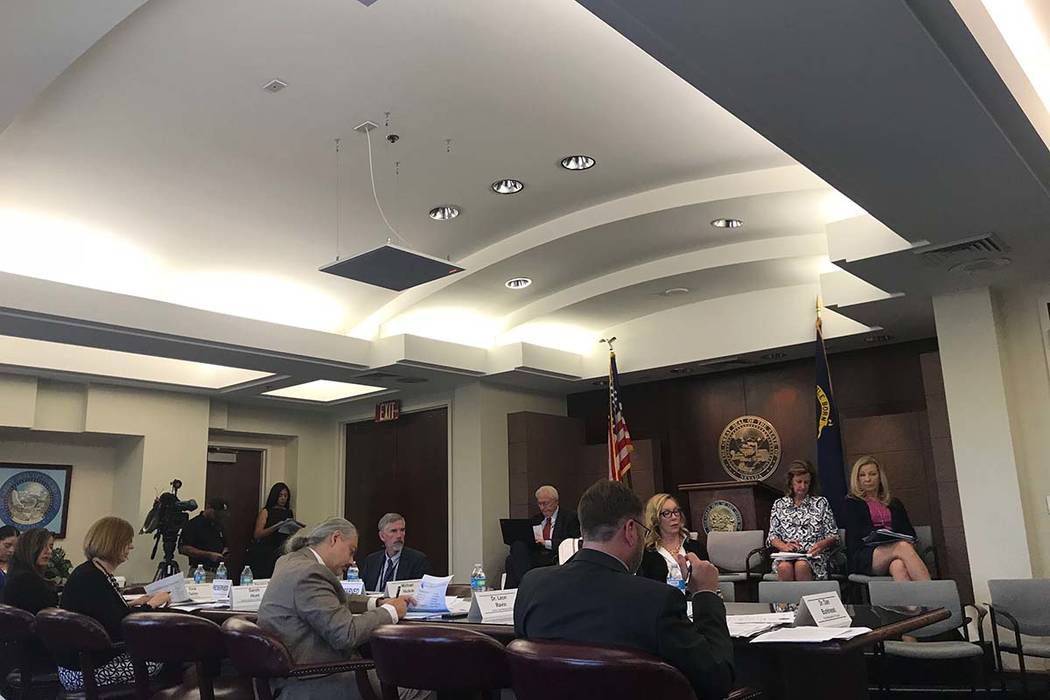Nevada opioid panel updated on efforts to reduce painkiller toll

The governor’s task force on the opioid crisis met for the second time on Wednesday to receive a progress report on its efforts to rein in abuse and death resulting from prescription painkillers.
Representatives of health care organizations and Nevada officials told members of the Governor’s Opioid State Action Accountability Task Force that progress was being made on four priorities identified by the panel at its first meeting in September: prescriber education, treatment options, data collection and criminal justice interventions.
Specifics included obtaining federal funding for three new treatment centers; development of informational presentations for schools and law enforcement; distribution of the opioid reversal drug naloxone to law enforcement; and creation of the Opioid Dashboard, a publicly available collection of state data related to the epidemic.
Mike Willden, Nevada Gov. Brian Sandoval’s chief of staff and representative on the panel, called the reporting a good start.
“As with any good strategic plan, you always have accountability,” he said. “I feel good that we’re making good progress. I know the governor feels that way, too. We want to continue making progress.”
Representatives from the state licensing boards said they have been focusing on educating prescribers on how to follow additional regulations required by the Prescription Drug Abuse Prevention Act, passed by the 2017 Nevada Legislature. The law has created an uproar among doctors worried that proposed disciplinary guidelines would threaten their ability to prescribe legitimately for chronic pain.
“Misinformation about the law is about of the biggest things we’ve been dealing with,” Dave Wuest, the state Board of Pharmacy’s deputy executive secretary, told the task force.
While educating doctors about the new reporting requirements through medical associations, licensing boards and online materials will continue to be a priority, Wuest said, efforts would be ramped up to educate patients.
On the addiction treatment side, Stephanie Woodard, a senior adviser on behavioral health to the state Department of Health and Human Services, said while the state was able to fund three treatment facilities in Northern and Southern Nevada through federal grants, her team is working to identify funding sources once those grants run dry, possibly through Medicaid.
At the task force’s third meeting in July, presenters promised to present updates on other task force goals, including identifying ways to compile real-time overdose data. State biostatistician Kyra Morgan said about 300 suspected overdose reports had been filed by health care providers with the state as a result of the new opioid prescription law, but added the state needs to verify the reports were filled out correctly and compare the total to statewide hospital billing data.
Another item for the next meeting, Willden said, would be a discussion of how insurers could help curb opioid use by covering alternative pain management treatments like acupuncture.
Contact Jessie Bekker at jbekker@reviewjournal.com or 702-380-4563. Follow @jessiebekks on Twitter.












